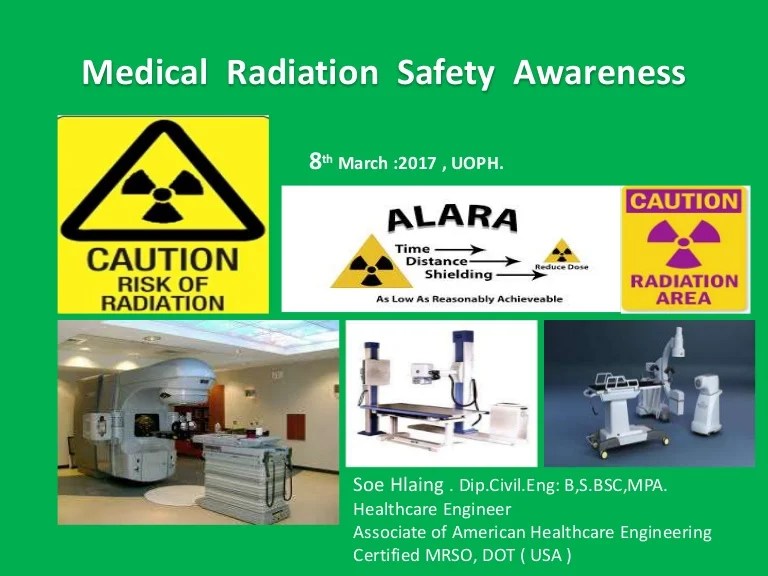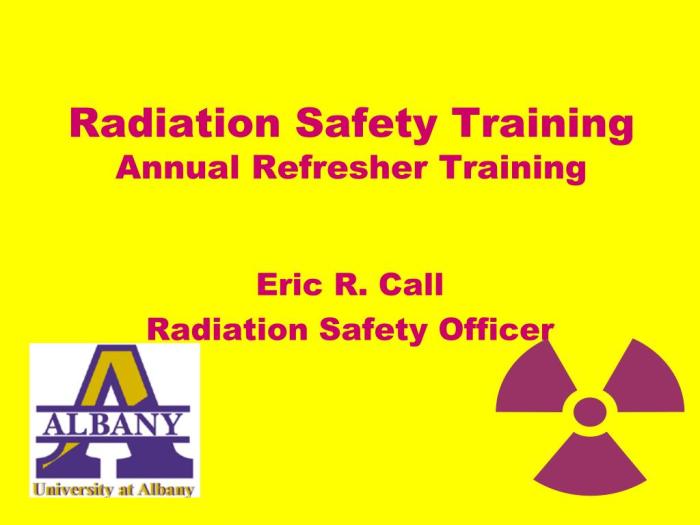Radiation awareness and safety refresher training answers provide crucial information for individuals working with or potentially exposed to radiation. This comprehensive guide delves into the types and sources of radiation, its effects on human health, and essential safety principles.
Understanding the principles of radiation safety, such as time, distance, and shielding, is paramount. Additionally, the use of personal protective equipment and radiation detection and monitoring methods plays a vital role in ensuring safety. In the event of a radiation incident, emergency response procedures must be implemented promptly to minimize risks.
Radiation Types and Sources

Radiation encompasses a range of energy forms emitted by unstable atomic nuclei or particles. It can be classified into several types based on its physical characteristics and behavior:
Alpha Radiation
- Consists of positively charged helium nuclei.
- Has low penetrating power and can be shielded by a few centimeters of air or paper.
- Can be hazardous if ingested or inhaled due to its high ionization potential within biological tissues.
Beta Radiation, Radiation awareness and safety refresher training answers
- Comprises high-energy electrons or positrons.
- Has moderate penetrating power and can be shielded by a few millimeters of aluminum or plastic.
- Can cause skin damage and contribute to the development of certain types of cancer.
Gamma Radiation
- Consists of high-energy photons with no mass or charge.
- Has high penetrating power and requires thick lead or concrete shielding.
- Can penetrate the body and damage internal organs, increasing the risk of cancer and other health effects.
Neutron Radiation
- Composed of uncharged particles with a mass similar to a proton.
- Has high penetrating power and can cause significant damage to biological tissues.
- Typically emitted during nuclear reactions and is a concern in nuclear power plants and medical facilities.
Sources of radiation exposure can be both natural and man-made:
- Natural sources:Cosmic radiation from space, radon gas in the environment, and radioactive elements present in the Earth’s crust.
- Man-made sources:Medical imaging procedures, nuclear power plants, industrial radiography, and nuclear weapons.
Query Resolution: Radiation Awareness And Safety Refresher Training Answers
What are the different types of radiation?
Radiation types include alpha, beta, gamma, and neutron radiation.
How can radiation exposure affect human health?
Radiation exposure can cause acute effects like skin damage and chronic effects like cancer.
What are the principles of radiation safety?
Radiation safety principles involve minimizing time spent near radiation sources, maintaining distance, and using shielding.
What methods are used to detect and measure radiation?
Radiation detection and measurement methods include Geiger counters and dosimeters.
What should be done in case of a radiation incident?
In a radiation incident, emergency response procedures should be followed, including evacuation and sheltering.

